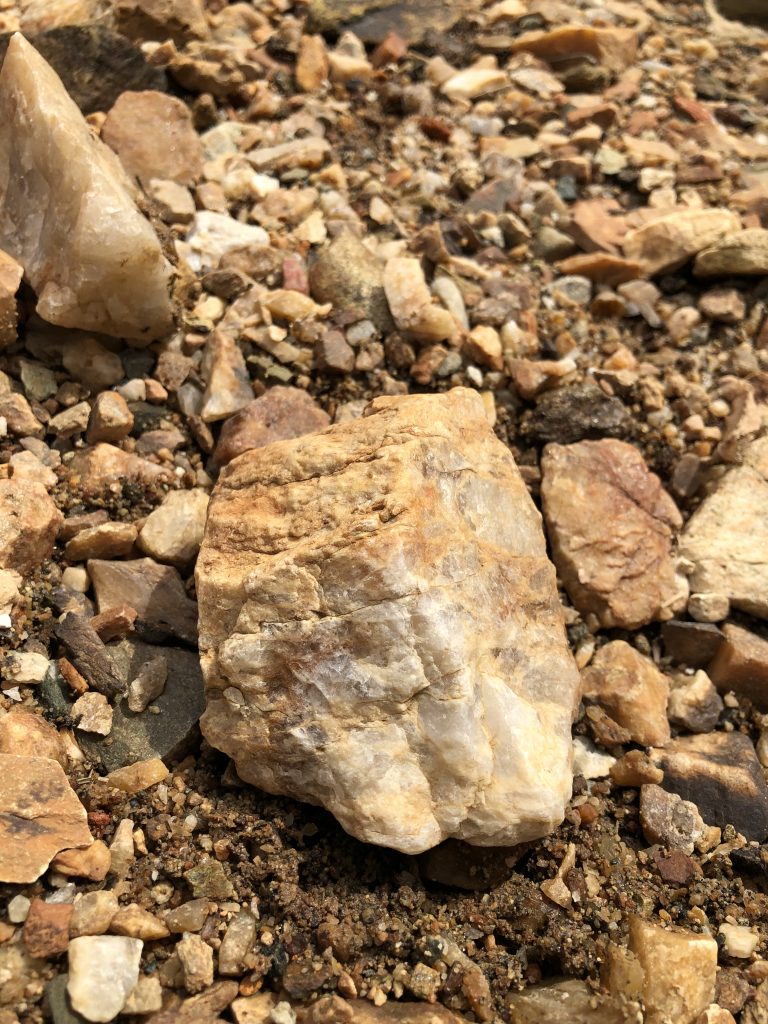An extremely important geologic feature of the Guilford woods is the groundwater aquifer that exists throughout the area. This aquifer has been tapped in to with a set of well nests on the Guilford property. The first of the two well nests exists close to the lake entrance of the woods, and is directly next to the path, while the second of the two well nests is deeper in to the woods and can be seen in the map image below marked MW-1. Both of these nests consist of three wells each and their drilling allowed for an interesting look in to the different rock and soil types that exist under the surface.
While it is easily visible that our environment is made up of a clay rich soil, it is not commonly known what makes up the soil content. The surface soil is comprised of a silica rich sand and silt, which explains the high clay content due to the way that different silica rich minerals break down. This high clay content in the soil offers a lot of benefits for plants, such as the fact that clay soil has an extreme capacity to hold water due to the small pore spaces. However, these tight pore spaces also make it harder for the soil to hold oxygen which can create problems for newer plants trying to establish their root systems. In general, a large portion of the plants in the woods are woody plants, whose roots are more easily established in a clay rich soil. Plants that require a high moisture content in their soil also thrive in this environment, such as Beech trees. With a combination of a high moisture content and a lower capacity to hold oxygen, plants that have longer and thinner roots are more easily able to establish themselves.
Many of the rocks that are present in the area, specifically in the stream are comprised of quartz and feldspars. The quartz rich rocks can be easily identified by their pale white or clear coloration. The rocks with feldspars can be more pink in color and are often distinguished by striations on their surfaces or color lines running throughout. However, the rocks that can be found throughout the stream bed are not comprised completely of one mineral and usually consist of a combination. Most of the rocks in the area of the woods that I picked up and examined could be considered different types of granites, as well as conglomerates.
The geologic details of areas are often overlooked when considering the wild life that is present, but they drastically affect what can and can’t live in an area. The different minerals that are present and hydrologic features of a landscape directly affect the types of plants and trees that will grow, and in turn this affects the type of animals that will call the land home. In examining what is going on with the geology of a landscape we are able to get an interesting glimpse in to the history of the land far beyond the human history that we are able to account for.


